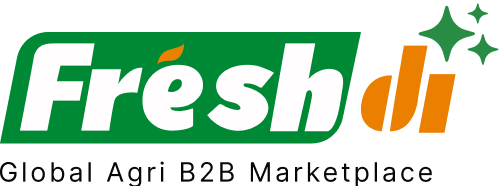Introduction – Current State of Play: The Coffee Sector in Philippines
Let’s talk coffee – not just your average morning brew, but the lifeblood of cafés, businesses, and a growing culture in the Philippines. As we dive into Q2 of 2025, the Philippine coffee market is experiencing some pretty intense shifts. Between climate shocks, global supply chain hiccups, and evolving consumer palates, the landscape has never been more dynamic.
So, what’s brewing? In 2024, global coffee prices surged by nearly 40%. Why? Because major exporters like Vietnam, Indonesia, and Brazil faced severe weather conditions. Vietnam alone saw a staggering 20% production drop. Those numbers aren’t just statistics—they’re shaking up prices and availability all around the world, including right here in the Philippines.
And here’s the local impact: the Philippines imported around 54,000 metric tons of coffee beans in 2024, shelling out over $229 million. The average cost per kilo jumped by 42%. That’s not just affecting roasters and retailers—it’s hitting your favorite café too, with some drinks costing P10 more.
But the government isn’t sitting idle. The Department of Agriculture (DA) has allocated nearly P155 million this year to support local coffee production with nurseries, seedlings, and farmer training. There’s even a Philippine Coffee Development Act in the works to speed things up.
Despite the rising costs, Filipinos aren’t giving up their caffeine fix. In fact, the country ranks fifth globally in coffee consumption. That’s right—fifth! The growing middle class and café culture are driving demand for higher-end, specialty coffee.
So, if you’re a business sourcing coffee in the Philippines, now’s the time to stay sharp. The market’s moving fast, and the right supplier can make—or break—your bottom line.
Let’s dive deeper.
Deep Dive – What’s Making Headlines? Key Recent News & Impacts
While there haven’t been any major new trade deals or game-changing tech rollouts lately, the ripple effects from global price increases and supply shortages are still dominating discussions. For businesses, this means one thing: agility is everything.
With global disruptions continuing to affect coffee flow, local suppliers are gaining more attention. Importers are becoming more cautious, and buyers are increasingly looking for verified, reliable suppliers who can weather the storm. That’s where platforms like Freshdi come in—offering real-time RFQ insights, supplier credibility checks, and sourcing intelligence.
Top 10 Verified Coffee Suppliers in Philippines – Navigating Current Market Realities
Here’s our curated list of the top coffee suppliers in the Philippines for Q2 2025, based on their track record, certifications, global reach, and Freshdi buyer reviews.
1. BRT Global LLC Consumer Goods Trading
- Offers both Arabica and Robusta beans.
- Known for fast turnover and consistent supply despite global shortages.
- Strong buyer ratings for responsiveness and quality control.
2. Kape’t Buhay Cooperative
- Recognized for their organic local beans sourced from Mindanao.
- Works closely with farmers to ensure sustainable practices.
- Increasing presence in domestic and international markets.
3. Philippine Coffee Company
- Focused on specialty-grade Arabica.
- Supplies cafés and grocery chains across Southeast Asia.
- Offers traceability and farm-to-cup solutions.
4. Mount Apo Coffee Inc.
- High-altitude coffee producer known for premium Arabica beans.
- Exports to Japan and the U.S.
- Invests in climate-resilient farming.
5. Coffee Heritage Project
- A sustainability-first initiative supporting heirloom coffee varieties.
- Offers limited batches with high cupping scores.
- Strong appeal in the specialty coffee segment.
6. Bukidnon Highlands Coffee Traders
- Sourcing from Bukidnon’s fertile highlands.
- Fast-growing exporter with GAP-certified farms.
- Offers flexible MOQs for SMEs and large buyers.
7. Davao Coffee Ventures
- Robust supply network in Davao Region.
- Blends modern processing with traditional sun-drying.
- Supplies commercial and premium-grade beans.
8. Kalinga Brew and Beans Cooperative
- Focus on indigenous Robusta beans.
- Fair-trade certified and community-led.
- Gaining popularity in domestic and artisan coffee markets.
9. Sagada Coffee Growers Association
- Cultivates Arabica in the cool highlands of the Cordilleras.
- Known for unique flavor profiles and limited edition lots.
- Ideal supplier for boutique roasters.
10. Kabuhayan Coffee Exporters
- One of the largest bulk exporters in the Visayas.
- Offers competitive freight rates and warehouse integration.
- Known for timely shipments and low defect rates.
Dynamic Ranking Note
Keep in mind that rankings shift frequently based on performance metrics. Platforms like Freshdi provide dynamic updates—think “Suppliers of the Month/Quarter”—to reflect real-time supplier activity, buyer reviews, and RFQ trends. Always check the latest supplier highlights before making a decision.
Market Navigation – Strategic Responses to Today’s Coffee Landscape in Philippines
Here’s the deal: if you’re sourcing coffee in the Philippines right now, you need a strategy that’s as flexible as your morning pour-over.
First off, shipping delays and higher freight costs mean you should consider working with suppliers that offer localized storage or flexible logistics. Suppliers like BRT Global LLC are adapting by partnering with regional logistics firms, giving buyers better control over inventory and delivery windows.
Second, the rising cost of imports makes it smart to look at local or regional suppliers. With the government amping up support for domestic production, now might be the perfect time to partner with cooperatives and local producers.
And third, keep an eye on consumer trends. While instant coffee still dominates, there’s a strong move toward specialty and single-origin beans. If you’re selling coffee products, consider diversifying your lineup to include premium options.
Platforms like Freshdi can help you pivot fast—whether it’s spotting a new RFQ opportunity or getting real-time data on a supplier’s shipment capabilities.
Conclusion – Key Takeaways for Businesses in a Rapidly Evolving Market
So, what’s the bottom line for businesses in the Philippine coffee game?
- Global pressures are real. Weather issues in top producing countries are tightening supply chains and pushing prices up.
- Local responses are promising. The Philippine government is investing heavily in domestic coffee production. This could open up new supplier opportunities in the near future.
- Consumer preferences are evolving. People are willing to pay more for quality. Specialty and sustainable coffee are gaining ground.
- Supplier selection matters more than ever. With prices and logistics in flux, working with verified, agile suppliers is key.
- Platforms like Freshdi are your best friend. From finding high-performing suppliers to tracking RFQ trends, Freshdi helps you make informed, responsive sourcing decisions.
References
- FAO – Adverse Climatic Conditions Drive Coffee Prices
- PhilStar – Rising Costs Brew Bitter Mix
- PhilStar – Coffee Industry Government Support
- Fitch Solutions – Coffee Market Outlook
- TraceXTech – Coffee Production in the Philippines
FAQs
1. Why are coffee prices rising in the Philippines in 2025?
Due to poor harvests in top producing countries and higher global shipping costs, the price of imported coffee has gone up, affecting local prices too.
2. Is the Philippines doing anything to boost local coffee supply?
Yes! The government has increased funding for seed distribution, training, and nurseries, and is drafting a national coffee development law.
3. Where can I find reliable coffee suppliers in the Philippines?
Platforms like Freshdi offer verified suppliers, real-time RFQ insights, and dynamic rankings to help you make informed sourcing decisions.
4. What types of coffee are popular in the Philippines right now?
While instant coffee still sells big, there’s growing demand for specialty, single-origin, and sustainably sourced Arabica and Robusta beans.
5. How can businesses reduce supply risks in this market?
Diversify suppliers, build relationships with local cooperatives, monitor price trends via platforms like Freshdi, and consider holding higher inventory levels to buffer delays.


